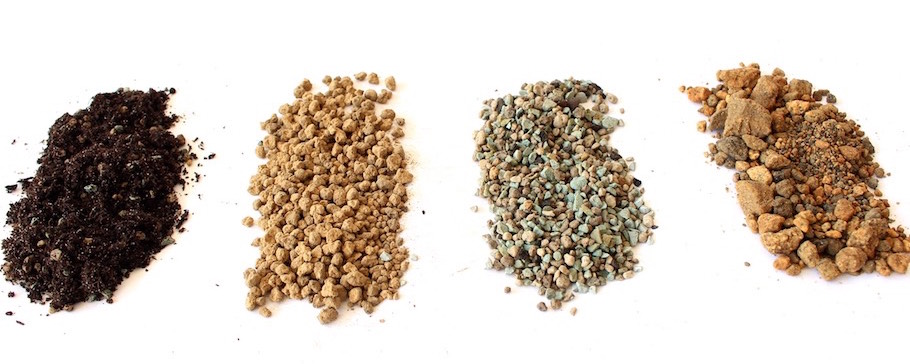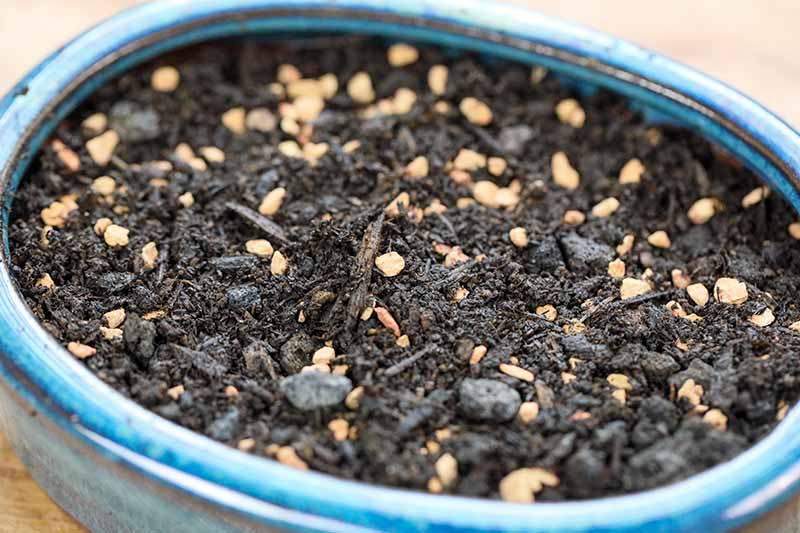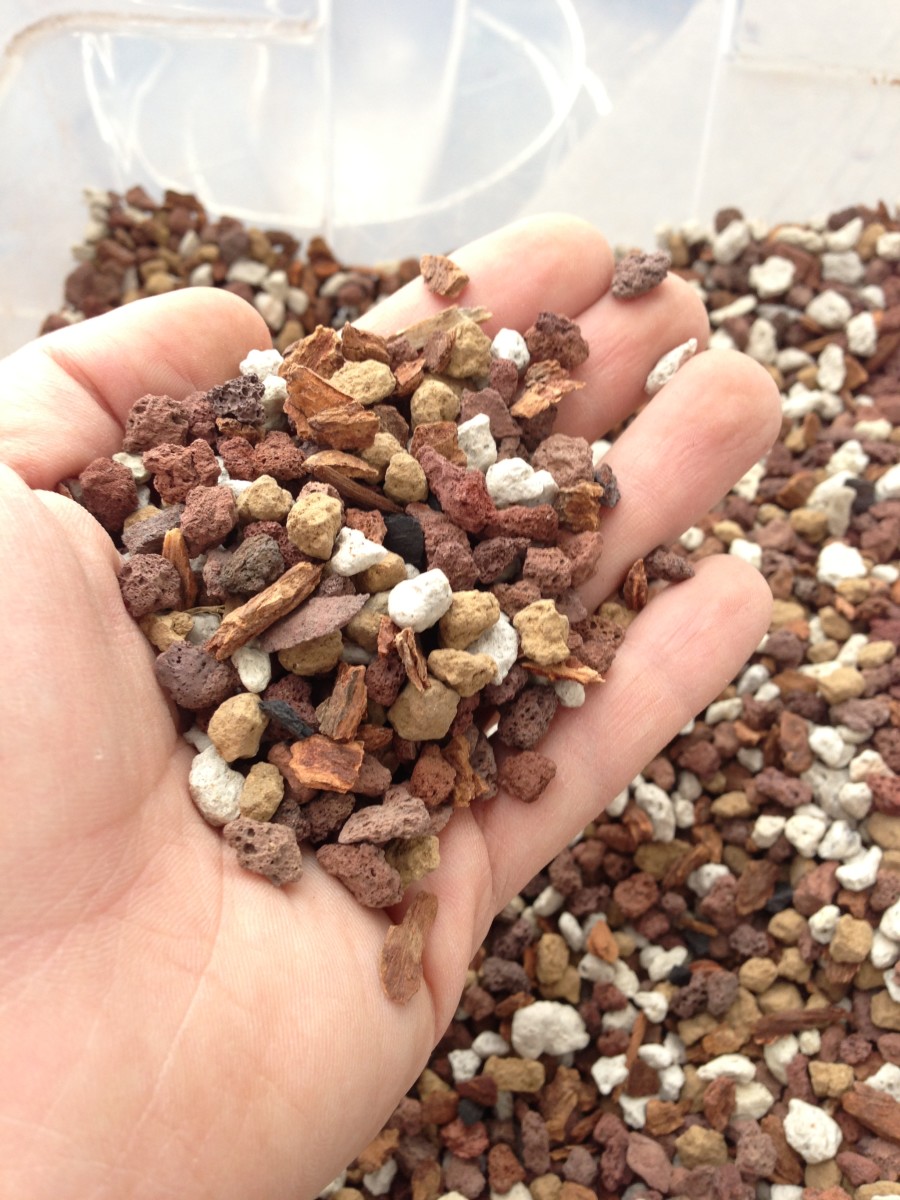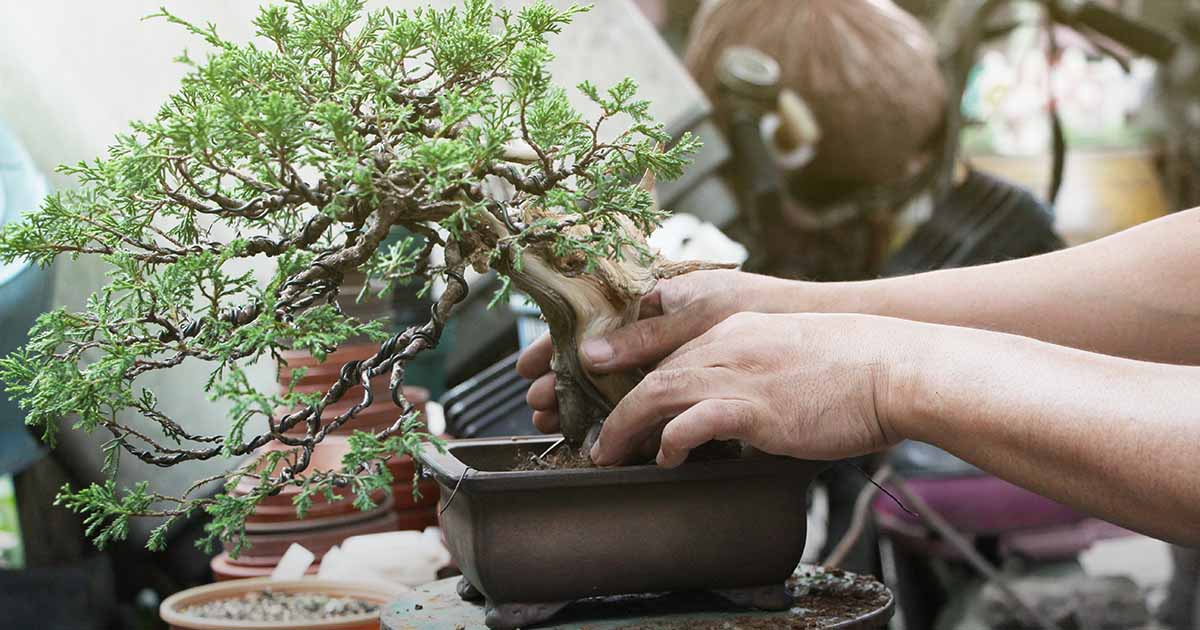In this post, we are going to explore the different sorts of soil and substrates Employed in bonsai cultivation, together with natural and organic and inorganic selections.
We'll also learn encouraged soil mixtures for many bonsai species, including deciduous, coniferous, and indoor versions. From akadama and pumice to moss and river sand, we are going to dive to the fascinating entire world of bonsai soil and assist you understand why It really is a significant part of cultivating these exquisite trees.

Bonsai soil
What is bonsai soil?
Bonsai soil is a specialized type of soil that is specifically formulated for growing and maintaining bonsai trees. Unlike regular garden soil, bonsai soil is well-draining and provides the necessary nutrients and moisture balance for the tree's root system. The composition of bonsai soil is carefully designed to meet the unique needs of bonsai trees, ensuring their health and longevity.
The importance of bonsai soil
The choice of soil plays a crucial role in the success of your bonsai tree. The right soil provides optimal drainage, allowing excess water to flow freely and preventing root rot. It also promotes a healthy and well-developed root system, which is essential for the overall health and growth of the tree. Bonsai soil retains moisture while allowing air to reach the roots, striking the perfect balance for the tree's needs. Choosing the right bonsai soil is essential for maintaining a healthy and thriving bonsai tree.
Bonsai substrates
What are bonsai substrates?
Bonsai substrates refer to the different materials that can be used to create the ideal soil composition for bonsai trees. These substrates are carefully chosen to meet the specific needs of different species of bonsai trees and to ensure proper water drainage and nutrient availability.
Different types of bonsai substrates
There are various types of bonsai substrates available, each with its own unique characteristics and benefits. Some common bonsai substrates include:
- Organic materials: These include ingredients such as bark, peat moss, and coconut coir. Organic substrates help retain moisture and provide essential nutrients to the bonsai tree.
- Inorganic supplies: These include things like elements like pumice, lava rock, and akadama. Inorganic substrates present exceptional drainage, ensuring that excessive drinking water isn't going to accumulate around the roots of the bonsai tree.
- Soil amendments: These are generally substances that happen to be added to your soil mixture to boost its Houses. Samples of soil amendments incorporate perlite, vermiculite, and sand. They Enhance the soil's aeration, h2o-Keeping ability, and nutrient availability.
By comprehending the differing types of bonsai substrates as well as their Qualities, you may decide on the best suited one to your bonsai tree's needs.
Organic or Inorganic Soils
Organic and natural soils for bonsai
Organic and natural soils for bonsai are made up of purely natural supplies for example bark, peat moss, coconut coir, and compost. These components offer a abundant supply of nutrients for that bonsai tree and market healthful root growth. Organic and natural soils even have good drinking water retention Attributes, ensuring which the tree gets enough humidity between watering classes. Having said that, it is important to note that organic and natural soils may well stop working eventually and grow to be compacted, bringing about bad drainage and possible root difficulties.
Inorganic soils for bonsai
Inorganic soils for bonsai encompass materials like pumice, lava rock, akadama, and soil amendments like perlite or vermiculite. These materials have excellent drainage properties, preventing waterlogged soil and advertising and marketing aeration within the roots. Inorganic soils are most well-liked by a lot of bonsai lovers due to their longevity and ability to deliver a steady surroundings for your bonsai tree's root method. On the other hand, They could call for far more Recurrent watering and extra fertilization, as they do not hold just as much moisture or nutrients as organic soils.
Pros and cons of utilizing organic and inorganic soils for bonsai
Picking in between organic and natural and inorganic soils on your bonsai tree is determined by a variety of aspects, such as the unique species of tree, your weather, and private Tastes. Here's the advantages and drawbacks of every:
Natural soils:
- Pros: Supply nutrients, very good water retention, boost healthy root development.
- Downsides: May break down over time, opportunity for lousy drainage Otherwise effectively maintained.
Inorganic soils:
- Professionals: Excellent drainage, lengthy-lasting, secure atmosphere for roots.
- Drawbacks: Considerably less h2o retention, might need a lot more frequent watering and fertilization.
By considering the benefits and drawbacks of the two organic and natural and inorganic soils, you may make an knowledgeable conclusion dependant on the precise desires of one's bonsai tree.
Soil parts
Key components of bonsai soil
Bonsai soil is usually made up of three major elements: grit, natural matter, and clay. These elements operate together to make The perfect soil composition with the bonsai tree's root procedure.
- Grit: Grit, for example sand or perlite, offers drainage and aeration during the soil. It can help stop waterlogging and lets air to get to the roots.
- Organic issue: Organic subject, for example compost or bark, presents nutrients to the bonsai tree. It also allows retain dampness and Enhance the soil's Over-all composition.
- Clay: Clay particles give some drinking water retention qualities and assistance bind the soil jointly. Having said that, excessive clay can result in bad drainage and compaction.
Job of every soil ingredient
Each soil ingredient plays a significant job in developing a very well-well balanced and healthful surroundings with the bonsai tree's roots.
- Grit: Grit delivers the required drainage and aeration during the soil. It prevents the roots from sitting in stagnant drinking water, reducing the chance of root rot and selling In general root well being.
- Organic and natural make any difference: Natural and organic subject delivers vital nutrients on the bonsai tree. It aids in humidity retention and contributes to the general framework with the soil.
- Clay: Clay particles assist bind the soil with each other and provide some water retention capacity. On the other hand, it is vital to equilibrium the level of clay to prevent issues like lousy drainage and compaction.
By understanding the roles of each soil element, you could develop a balanced bonsai soil blend that meets the specific demands of your respective tree.

Recommended Bonsai soil mixtures
Common bonsai soil mixtures
There are several common bonsai soil mixtures that have been proven effective for various types of bonsai trees. These mixtures typically consist of a combination of inorganic substrates, organic matter, and soil amendments.
Some of the commonly used bonsai soil mixtures include:
- Akadama, pumice, and lava rock: This mixture is popular among bonsai enthusiasts for its excellent drainage and water retention properties.
- Akadama, lava rock, and organic make a difference: This combination combines the key benefits of inorganic substrates Along with the nutrient-wealthy Homes of organic make a difference.
- Pumice, perlite, and bark: This mixture offers excellent drainage and aeration although retaining some moisture and offering nutrients.
These are definitely just a few examples of bonsai soil mixtures, and the ideal combination will count on the precise needs of the bonsai tree along with your climate.
Elements to look at when picking a bonsai soil mixture
When picking a bonsai soil mixture, it is important to take into consideration the subsequent elements:
- Species of bonsai tree: Diverse species have distinctive moisture and nutrient demands. Research the specific desires of your respective tree to choose a soil mixture that meets its specifications.
- Weather: The climate you live in can have an effect on the dampness retention Qualities with the soil. Evaluate the typical humidity and temperature close to you When selecting a soil mixture.
- Watering behaviors: Your personal watering practices and schedule really should align Together with the soil mixture you decide on. Some mixtures require additional Repeated watering, while others keep humidity for for a longer time periods.
- Price range: Some soil parts might be costlier than Many others. Contemplate your spending plan when selecting a soil combination.
By taking these variables under consideration, you are able to go with a bonsai soil mixture that provides the top expanding ailments for your tree.
Deciduous Bonsai soil
Most effective soil composition for deciduous bonsai
Deciduous bonsai trees, for instance maple or birch, have distinct soil prerequisites to help their expansion and health. The very best soil composition for deciduous bonsai generally includes a mixture of natural make a difference, inorganic substrates, and soil amendments.
A recommended soil composition for deciduous bonsai could incorporate:
- Akadama: Gives excellent h2o retention even though allowing for for drainage. Furthermore, it releases nutrients bit by bit after some time.
- Pumice: Promotes aeration and drainage in the soil, protecting against waterlogging.
- Bark or peat moss: Provides organic and natural subject on the soil, providing nutrients and moisture retention.
This soil composition ensures that the roots of deciduous bonsai trees receive the proper equilibrium of humidity, nutrients, and oxygen for best advancement.

Coniferous and Pine soil
Ideal soil mixture for coniferous and pine bonsai
Coniferous and pine bonsai trees have specific soil requirements due to their water retention needs and preference for acidic soil. An ideal soil mixture for coniferous and pine bonsai should provide good drainage while retaining moisture and maintaining the desired pH level.
A recommended soil mixture for coniferous and pine bonsai may include:
- Akadama: Provides excellent water retention while allowing for sufficient drainage. It releases nutrients slowly over time.
- Pumice: Promotes aeration and drainage from the soil, preventing waterlogged roots.
- Peat moss: Adds natural make a difference and acidity to the soil, making a super pH degree for coniferous and pine trees.
This soil combination makes sure that the roots of coniferous and pine bonsai trees receive the best equilibrium of moisture, nutrients, and acidity for his or her unique needs.
Akadama
What is akadama?
Akadama can be a variety of clay soil that is commonly used in bonsai cultivation. It is actually noted for its great drinking water retention properties, which guarantee a gentle supply of humidity into the bonsai tree's roots. Akadama is usually prized for its capacity to release nutrients little by little as time passes, giving a consistent source of nourishment for the tree.
Benefits of working with akadama in bonsai soil
Using akadama in bonsai soil delivers various benefits:
- Water retention: Akadama has Excellent h2o retention properties, permitting it to carry dampness with out getting waterlogged. This makes sure that the bonsai tree's roots get a regular offer of drinking water, advertising and marketing wholesome advancement.
- Nutrient release: Akadama slowly but surely releases nutrients into the soil after some time, giving a regular source of nourishment for that bonsai tree. This cuts down the necessity for Recurrent fertilization and assists keep a balanced nutrient profile.
- Aeration: Regardless of its drinking water retention abilities, akadama also provides sufficient aeration for the bonsai tree's roots. It makes it possible for air to get to the root procedure, preventing problems including root rot on account of not enough oxygen.
By incorporating akadama into the bonsai soil, you are able to develop an ideal increasing setting in your tree, making sure its health and vitality.

Lava rock
How lava rock benefits bonsai soil
Lava rock is a popular component in bonsai soil mixtures due to its excellent drainage and aeration properties. It is typically used in conjunction with other substrates to create the ideal soil composition for bonsai trees.
The benefits of lava rock in bonsai soil include:
- Drainage: Lava rock provides excellent drainage, preventing waterlogging and ensuring that excess water flows freely through the soil. This helps prevent root rot and provides a healthy environment for the roots to thrive.
- Aeration: The porous character of lava rock lets air to flow into throughout the soil, offering oxygen to the bonsai tree's root method. Appropriate aeration is critical for healthier root advancement and overall tree development.
- Longevity: Lava rock is really a sturdy materials that does not stop working conveniently. This makes certain that the soil construction stays secure eventually, reducing the necessity for Recurrent soil replacements.
Lava rock is available in various sizes and shapes, allowing for personalization determined by the particular demands of your respective bonsai tree and soil specifications.
Differing types of lava rock
You can find differing kinds of lava rock which can be Utilized in bonsai soil mixtures, which include:
- Black lava rock: Black lava rock is a commonly made use of materials in bonsai soil mixtures. It provides outstanding drainage Qualities and provides an aesthetic ingredient to the general presentation with the bonsai tree.
- Pink lava rock: Red lava rock is another well-liked selection in bonsai soil mixtures. It offers similar drainage and aeration Gains as black lava rock but has a definite reddish colour that provides Visible desire into the container.
Both black and red lava rocks are greatly out there and might be quickly included into your bonsai soil combination.
Potting
Vital guidelines for thriving bonsai potting
Potting is often a significant course of action in bonsai cultivation, because it straight impacts the health and fitness and progress on the tree's roots. Here are several critical strategies for thriving bonsai potting:
- Pick the appropriate pot dimension: Select a bonsai pot which allows for root advancement though however furnishing a cosy healthy. Keep away from pots which can be too substantial, because they can lead to abnormal soil dampness and lousy root improvement.
- Use bonsai wire: Safe the tree in the pot applying bonsai wire to be sure stability. This helps prevent the tree from shifting or turning out to be uprooted during watering or solid winds.
- Trim and spread the roots: Before potting the bonsai tree, thoroughly trim and unfold out the roots. This encourages outward development and helps prevent root tangling or root-sure troubles.
- Insert mesh screens: Area mesh screens in excess of the drainage holes at the bottom with the pot to stop soil erosion and be certain correct drainage.
- Use clean bonsai soil: When potting, constantly use contemporary bonsai soil to provide the required nutrients and ideal developing circumstances for the roots.
By following these crucial ideas, you'll be able to make certain A prosperous potting procedure and endorse the overall wellbeing and advancement of your bonsai tree.
The part of bonsai pots in soil dampness Handle
Bonsai pots Participate in a crucial role in soil moisture Handle, right impacting the wellbeing and expansion with the tree. Bonsai pots are generally shallow and possess drainage holes, allowing excess water to flee and preventing the soil from turning into waterlogged.
The design of bonsai pots encourages evaporation and air circulation, which aids regulate soil dampness amounts. The shallow depth and huge opening of your pot expose extra area area from the soil towards the air, aiding in moisture evaporation. This prevents the roots from sitting in excessively wet soil, reducing the potential risk of root rot and various h2o-related issues.
Additionally, the drainage holes in bonsai pots allow any excessive drinking water to escape, stopping waterlogged soil and advertising aeration check here around the roots. Proper aeration is important for the wellbeing and growth of the basis program, making certain the bonsai tree receives the mandatory oxygen for advancement.
Through the use of bonsai pots made for efficient humidity control, you'll be able to build a positive environment for your personal bonsai tree's roots and encourage its Total wellness and vitality.
In summary, picking out the proper bonsai soil is vital for that good results and well being of your bonsai tree. Comprehending the differing types of bonsai substrates, the purpose of natural and inorganic soils, the key factors of bonsai soil, and the assorted recommended soil mixtures will allow you to offer the exceptional increasing conditions for your personal bonsai tree. No matter whether you have a deciduous or coniferous bonsai, incorporating products like akadama and lava rock can increase get more info the soil's drainage and nutrient availability. On top of that, paying attention to potting methods and utilizing bonsai pots made for dampness Manage will even further aid the flourishing development of one's bonsai tree. With proper knowledge and implementation of bonsai soil methods, you may benefit from the magnificence and artistry of bonsai cultivation for years to come.
